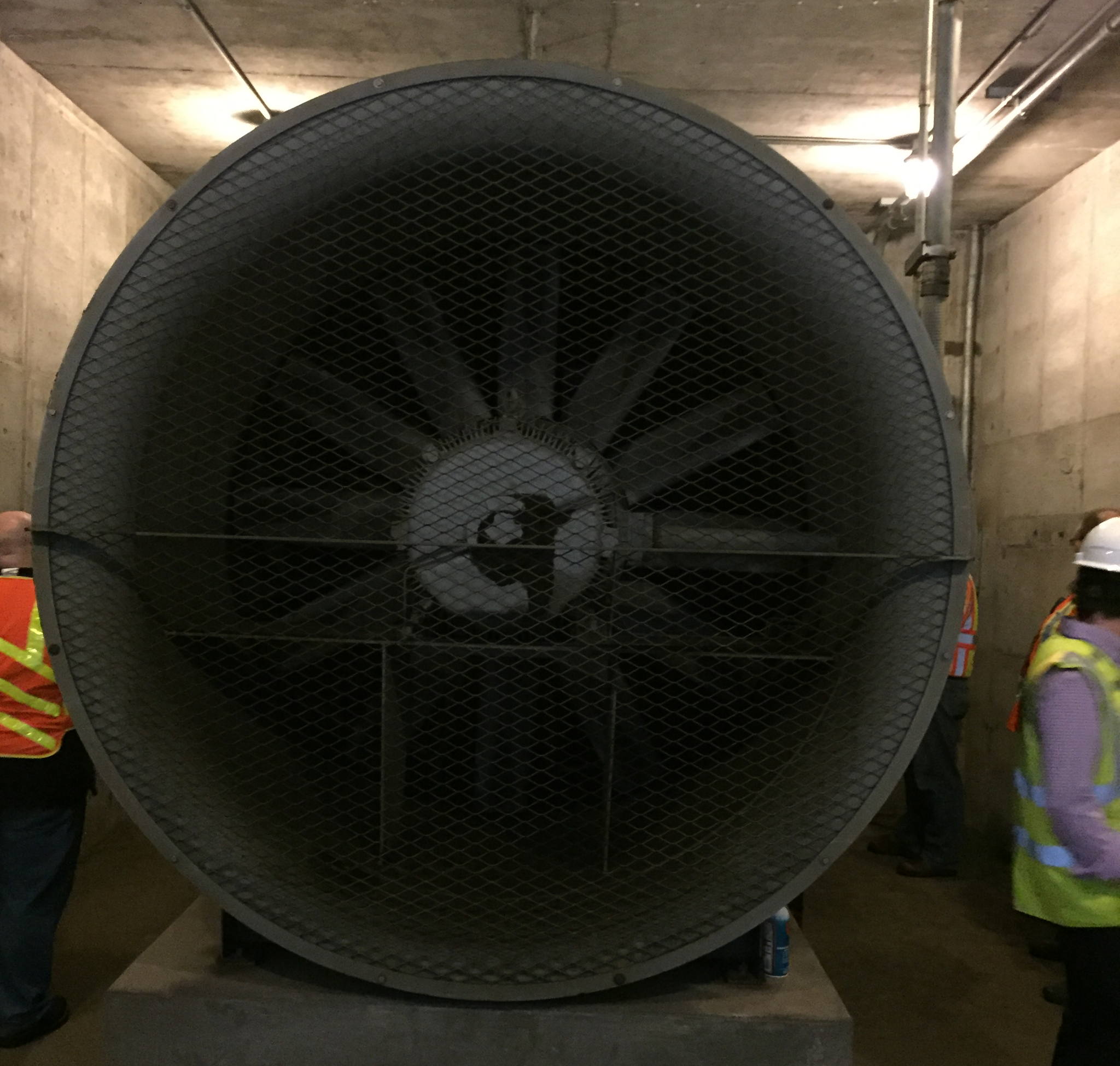From Noise Reduction to Rail Protection, New Mt. Lebanon Fan System Balances Community Needs with Rider Safety
Last month, PRT completed the replacement of four tunnel ventilation fans that make up the Mt. Lebanon Transit Tunnel’s ventilation system.
In July, Pittsburgh Regional Transit (PRT) completed the replacement of four tunnel ventilation fans, and their corresponding controls and operating equipment, that make up the Mt. Lebanon Transit Tunnel’s ventilation system. The tunnel runs from Mt. Lebanon Township to the Dormont Borough.
In the 1980s, the original fans were installed to help ventilate smoke in case a fire occurred in the tunnel. The fans can be controlled on site or remotely, from a PRT control center. In more recent years, PRT engineers noticed that some of the rail inside the tunnel was degrading because of water leaking into the tunnel during rainstorms.
“In addition to smoke ventilation, the fans work really well as dehumidifiers,” said David Matlin, an engineer and manager of capital programs for PRT. “We don’t want to have to replace the rail inside the tunnel prematurely, and running the fans helps remove moisture from the rail.”

The older fans, however, were extremely loud. When PRT began running the fans regularly in order to protect the rails from moisture degradation, community members and elected officials shared feedback about the fans’ noise level.
“It was particularly distracting and noticeable during the pandemic, when so many people were working from home,” said Matlin. “On our end, we need to balance noise levels with the community’s need for safe rail service – not always an easy feat.”
PRT conducted noise studies and interviewed community members in order to gauge how to best balance the sound from the fans against the need for dehumidifying and smoke ventilation. In other words, PRT needed to make sure the fans provided necessary safety measures while still taking their sound into consideration.
“The new fans are much, much quieter,” said Matlin. “They are quieter than the light rail vehicles themselves. There is absolutely no comparison to the original fans and their replacements.”
The new fans required PRT engineers to address rider safety, rail infrastructure, and noise considerations in addition to ensuring they are sized correctly and have enough power to successfully ventilate and dehumidify the tunnel.
“This project was an incredible balancing act, and we think the community will be really happy with the result,” said Matlin.


